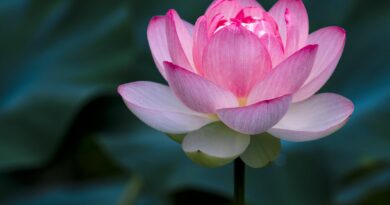Chapter 26 Modes Of Birth And Death
MAIN CONTENT
CHAPTER 26
MODES OF BIRTH AND DEATH
“Again, again the slow, wits seek rebirth,
Again, again comes birth and dying comes,
Again, again men bear its to the grave.”
— SAMYUTTA NIKĀYA
The Paticca-Samuppāda describes the process of rebirth in subtle technical terms and assigns death to one of the following four causes:
- Exhaustion of the Reproductive Kammic energy(kammakkhaya).
The Buddhist belief is that, as a rule, the thought, volition, or desire, which is extremely strong during lifetime, becomes predominant at the time of death and conditions the subsequent birth. In this last thought-process is present a special potentiality. When the potential energy of this Reproductive (janaka) Kamma is exhausted, the organic activities of the material form in which is embodied the life-force, cease even before the end of the life-span in that particular place.
This often happens in the case of beings who are born in states of misery (apāya) but it can happen in other planes too.
- The expiration of the life-term(āyukkhaya),which varies in different planes.
Natural deaths, due to old age, may be classed under this category.
There are different planes of existence with varying age-limits. Irrespective of the Kammic force that has yet to run, one must, however, succumb to death when the maximum age-limit is reached.
If the Reproductive Kammic force is extremely powerful, the Kammic energy. rematerialises itself in the same plane or, as in the case of Devas, in some higher realm.
- The simultaneous exhaustion of the Reproductive Kammic energy and the expiration of the life-term(ubhayakkhaya).
- The opposing action of a stronger Kamma unexpectedly obstructing the flow of the Reproductive Kamma before the life-term expires(upacchedaka-kamma).
Sudden untimely deaths of persons and the deaths of children are due to this cause.
A more powerful opposing force can check the path of a flying arrow and bring it down to the ground. So a very powerful Kammic force of the past is capable of nullifying the potential energy of the last thought-process, and may thus destroy the psychic life of the being.
The death of Venerable Devadatta, for instance, was due to a Destructive Kamma which he committed during his lifetime.
The first three are collectively called “timely deaths” (kāla-marana), and the fourth is known as “untimely death” (akāla-marana).
An oil lamp, for instance, may get extinguished owing to any of the following four causes — namely, the exhaustion of the wick, the exhaustion of oil, simultaneous exhaustion of both wick and oil, or some extraneous cause like a gust of wind.
So may death be due to any of the foregoing four causes.
Explaining thus the causes of death, Buddhism states that there are four modes of birth — namely, 1. egg-born beings (andaja), 2. womb-born beings (jalābuja), 3. moisture-born beings (samsedaja), and 4. beings having spontaneous births (opapātika).
This broad classification embraces all living beings.
Birds and oviparous snakes belong to the first division.
The womb-born creatures comprise all human beings, some devas inhabiting the earth, and some animals that take conception in a mother’s womb.
Embryos, using moisture as nidus for their growth, like certain lowly forms of animal life, belong to the third class.
Beings having a spontaneous birth are generally invisible to the physical eye. Conditioned by their past Kamma, they appear spontaneously, without passing through an embryonic stage. Petas and Devas normally, and Brahmas belong to this class.




